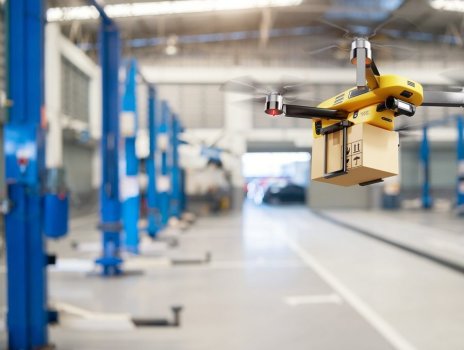K
Kathleen Martin
Guest
Tell us of your company and role
My name is Chris Gee, and I work for Connected Places Catapult. and our business is about providing smarter-living solutions. We help grow businesses by innovating in mobility services and the built environment. Our solutions offer new levels of physical, digital and social connectedness. We operate at the intersection between public and private sectors, and between local government and transport authorities.
As Future Aviation Technologist, I manage the UK’s most complex air-mobility projects. One is the Drone Pathfinder Catalyst Programme, which is helping realise the potential of drones across a broad range of industries and sectors. We are doing this in partnership with the Department for Transport and the Civil Aviation Authority, as well as with industry and academia.
How will drones change supply chain?
The potential for drones as powerful business tools is huge. For supply chains, drones can be used in warehouses to increase the accuracy and efficiency of inventory management through to last-mile delivery.
Which firms use drones most for supply?
Some of the most exciting developments of drone technology we have seen are in logistics, where they have come into their own.
The flow of medical supplies during the pandemic is now one of the most recognised-use cases, and many companies are working with the NHS to build drones into the medical supply chain. This has value for time-critical deliveries to remote areas, because certain drugs have a short effective lifespan.
There are also retail delivery examples, where drones provide fast delivery from a network of local retailers. I wouldn’t be surprised to see the first commercial drone delivery service start in the UK this year.
What’s the toughest part of your job?
The landscape is always changing - developments in regulations, advances in technology and new services are launched daily. This might be a challenge to some, but I find it fascinating. It does mean I always have a very long reading list of things to catch up with!
We work on the most interesting and involved air mobility projects in the UK. This is a very broad portfolio of projects, ranging from shaping the UK’s legislation for drones to exploring the commercial models for the new types of digital infrastructure needed to support services such as drone delivery.
Best bit of advice you’ve been given?
That collaboration is key. Especially if we want to accelerate the next revolution in air mobility. Given the complexity of what the sector is trying to achieve in order to achieve commercialisation, we must be clear on the outputs of each project we work on.
This means that we focus on the aspects of the project where we can have the maximum impact. That way, we avoid getting caught up in areas that the project is unable to influence.
Continue reading: https://supplychaindigital.com/logistics/drone-use-in-supply-chain-about-to-take-off
My name is Chris Gee, and I work for Connected Places Catapult. and our business is about providing smarter-living solutions. We help grow businesses by innovating in mobility services and the built environment. Our solutions offer new levels of physical, digital and social connectedness. We operate at the intersection between public and private sectors, and between local government and transport authorities.
As Future Aviation Technologist, I manage the UK’s most complex air-mobility projects. One is the Drone Pathfinder Catalyst Programme, which is helping realise the potential of drones across a broad range of industries and sectors. We are doing this in partnership with the Department for Transport and the Civil Aviation Authority, as well as with industry and academia.
How will drones change supply chain?
The potential for drones as powerful business tools is huge. For supply chains, drones can be used in warehouses to increase the accuracy and efficiency of inventory management through to last-mile delivery.
Which firms use drones most for supply?
Some of the most exciting developments of drone technology we have seen are in logistics, where they have come into their own.
The flow of medical supplies during the pandemic is now one of the most recognised-use cases, and many companies are working with the NHS to build drones into the medical supply chain. This has value for time-critical deliveries to remote areas, because certain drugs have a short effective lifespan.
There are also retail delivery examples, where drones provide fast delivery from a network of local retailers. I wouldn’t be surprised to see the first commercial drone delivery service start in the UK this year.
What’s the toughest part of your job?
The landscape is always changing - developments in regulations, advances in technology and new services are launched daily. This might be a challenge to some, but I find it fascinating. It does mean I always have a very long reading list of things to catch up with!
We work on the most interesting and involved air mobility projects in the UK. This is a very broad portfolio of projects, ranging from shaping the UK’s legislation for drones to exploring the commercial models for the new types of digital infrastructure needed to support services such as drone delivery.
Best bit of advice you’ve been given?
That collaboration is key. Especially if we want to accelerate the next revolution in air mobility. Given the complexity of what the sector is trying to achieve in order to achieve commercialisation, we must be clear on the outputs of each project we work on.
This means that we focus on the aspects of the project where we can have the maximum impact. That way, we avoid getting caught up in areas that the project is unable to influence.
Continue reading: https://supplychaindigital.com/logistics/drone-use-in-supply-chain-about-to-take-off

